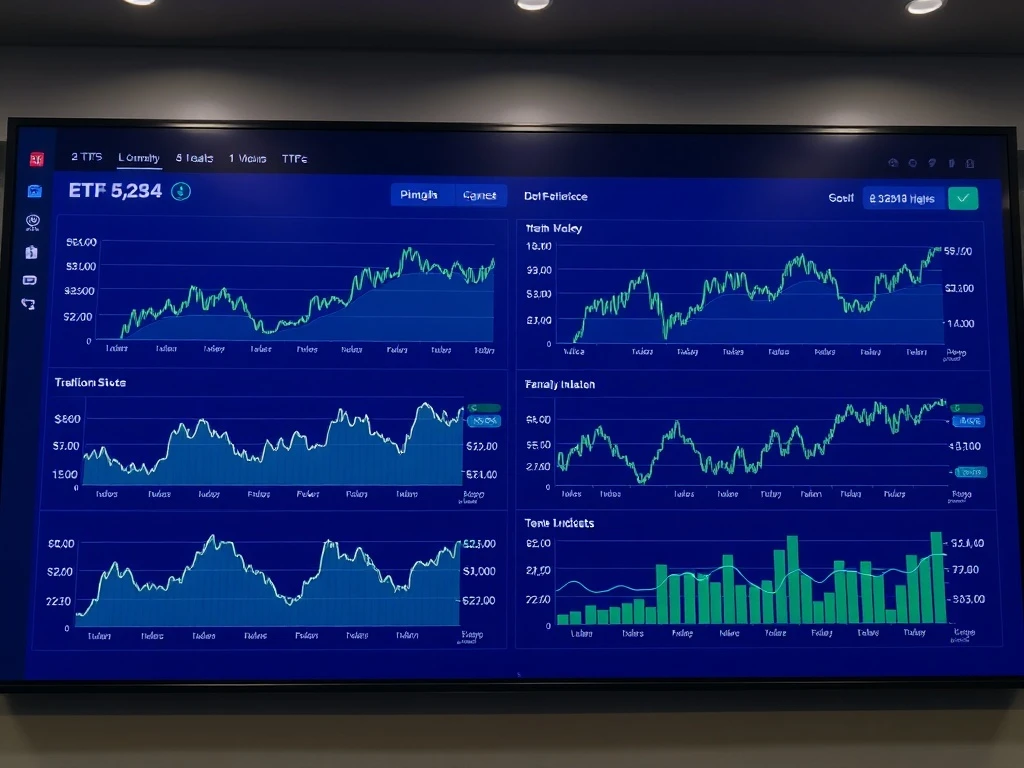Many investors currently worry about S&P 500 valuations reaching concerning levels. Consequently, they seek effective ETF alternatives for better risk management. This comprehensive analysis presents five strategic options for portfolio diversification.
Understanding Current Market Valuations
The S&P 500 frequently experiences valuation peaks. Therefore, investors must consider alternative approaches. ETF alternatives provide excellent diversification benefits. Moreover, they offer exposure to different market segments.
Top ETF Alternatives for Today’s Market
Several compelling ETF alternatives exist for cautious investors. First, international equity ETFs capture global growth. Second, sector-specific ETFs target high-potential industries. Third, dividend-focused ETFs provide steady income streams.
International Equity ETF Options
International markets often present better valuations. Consequently, global ETF alternatives become attractive. These funds typically feature:
• Broader geographic diversification
• Currency diversification benefits
• Exposure to emerging market growth
• Lower correlation to US markets
Sector-Specific ETF Strategies
Certain sectors consistently outperform during various market cycles. Therefore, sector ETF alternatives merit consideration. Technology and healthcare sectors frequently demonstrate strong growth potential. Additionally, renewable energy ETFs show promising long-term prospects.
Dividend and Value ETF Approaches
Dividend-focused ETF alternatives provide stability. They typically feature established companies with strong cash flows. Value-oriented ETFs often trade at reasonable valuations. Furthermore, they historically perform well during market corrections.
Implementation Strategies for ETF Alternatives
Investors should implement ETF alternatives gradually. Dollar-cost averaging reduces timing risks. Portfolio allocation typically ranges between 20-40% for alternatives. Regular rebalancing maintains target allocations effectively.
Risk Management Considerations
All investments carry inherent risks. However, ETF alternatives generally offer better diversification. Currency risks affect international ETF alternatives. Sector concentration represents another consideration factor.
Frequently Asked Questions
What makes ETF alternatives better during high valuations?
ETF alternatives provide exposure to different market segments that may be undervalued compared to the S&P 500, offering potential for better returns while reducing concentration risk.
How much should I allocate to ETF alternatives?
Most financial advisors recommend 20-40% allocation to alternative ETFs, depending on individual risk tolerance and investment goals.
Are international ETF alternatives riskier than US ETFs?
International ETFs carry additional currency and geopolitical risks, but they also provide valuable diversification benefits that can reduce overall portfolio risk.
How often should I rebalance my ETF alternative holdings?
Quarterly or semi-annual rebalancing helps maintain target allocations and takes advantage of market fluctuations effectively.
Can ETF alternatives completely replace S&P 500 exposure?
While possible, most advisors recommend maintaining some S&P 500 exposure while using alternatives for diversification rather than complete replacement.
What are the tax implications of ETF alternatives?
ETF alternatives typically have similar tax treatment to other ETFs, but international funds may involve foreign tax credits and different dividend treatment.








